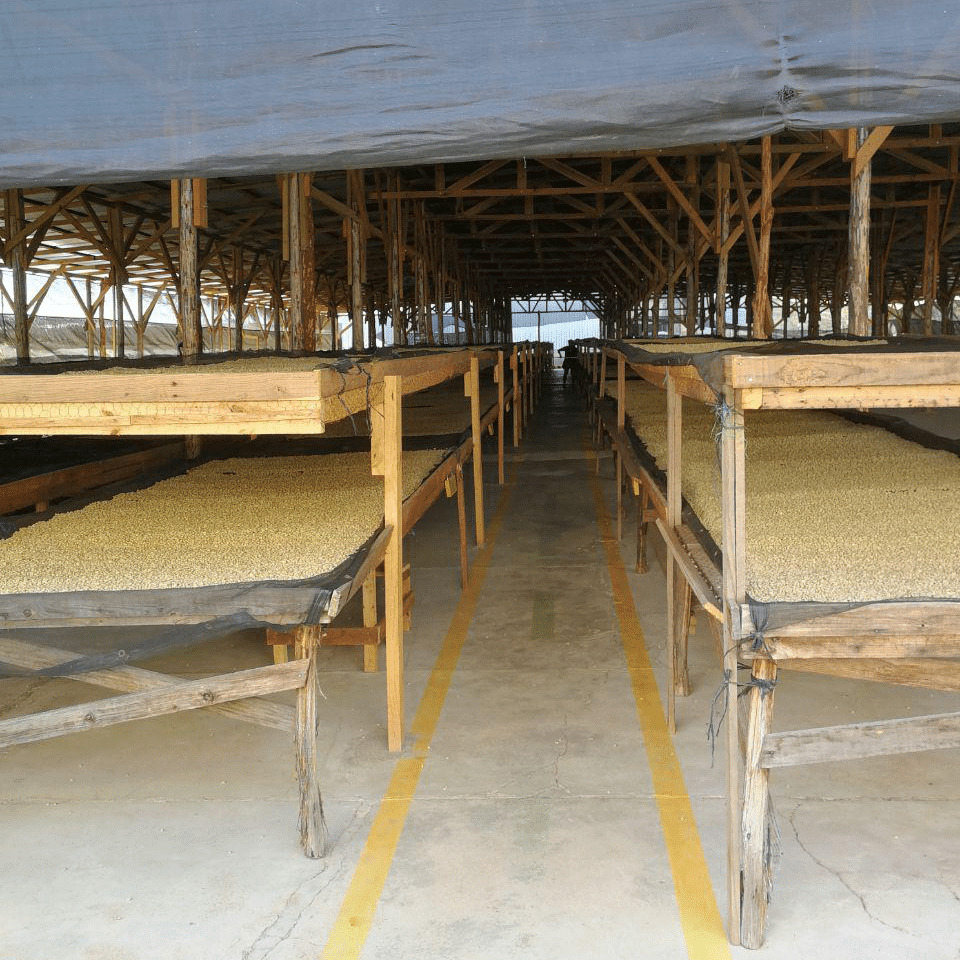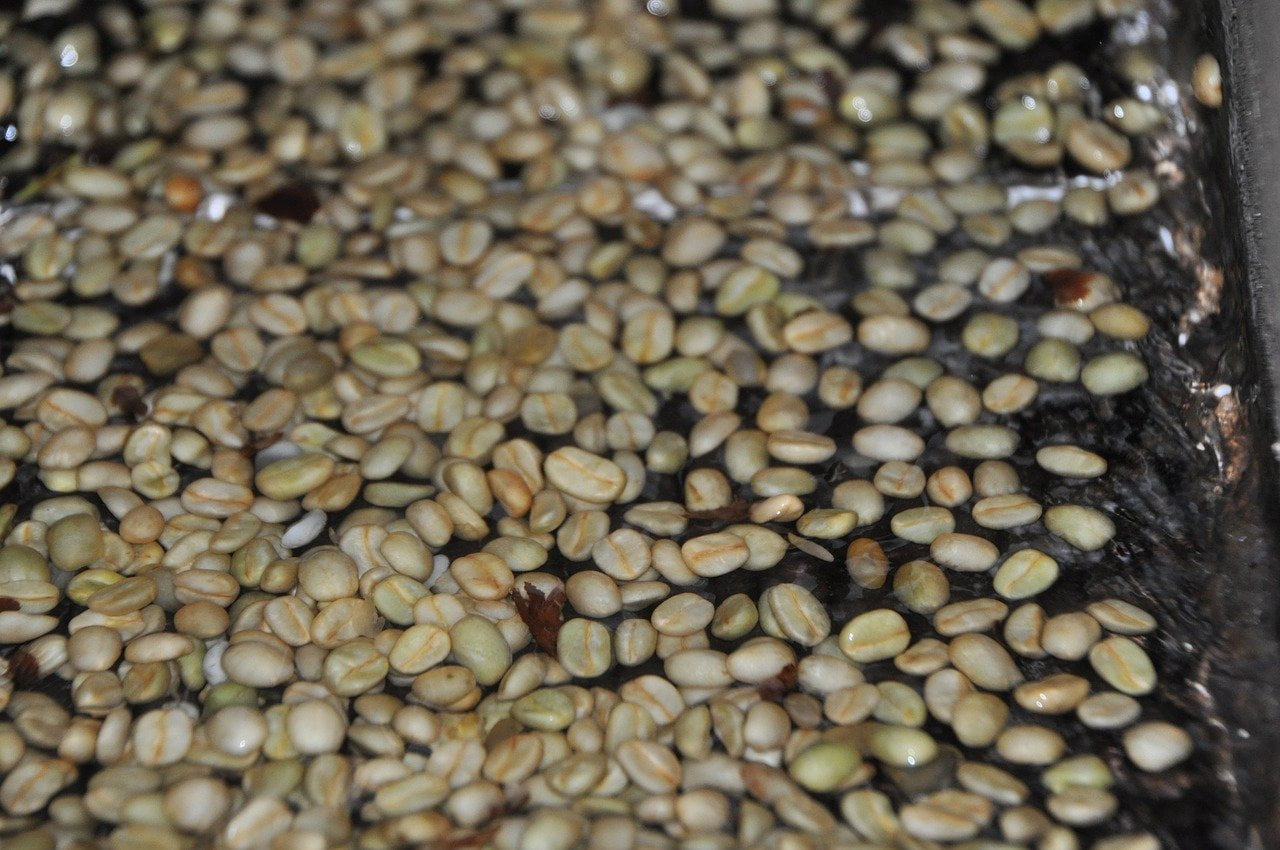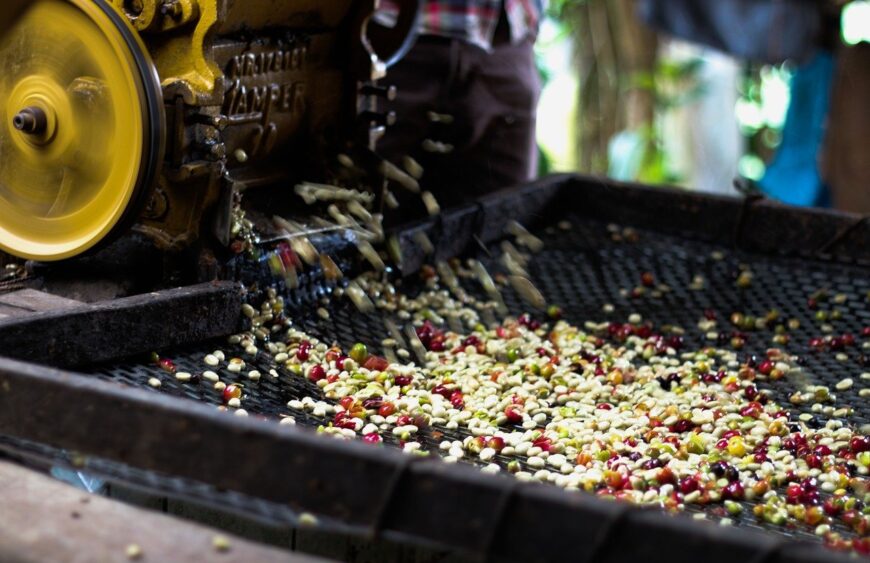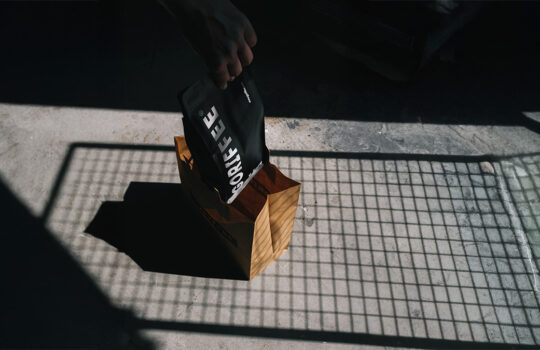The processing of coffee, or how the husk and pulp are separated from the bean, is one of the most important aspects of coffee cultivation. How coffee is processed can have a dramatic effect on the resulting quality and taste. Let’s take a look at the most common ways of processing coffee.
The aim of coffee processing is to separate the coffee bean from the cherry and increase its flavour potential. Even if the coffee has been perfectly grown, perfectly ripened and the harvest has been really good, poor processing can lead to mistakes that reduce the value of the coffee and affect farmers’ earnings to a high degree. Some processing methods require more time, investment and natural resources. Choosing the right processing is a key factor for producers.
Natural process

Also known as dry. It is the oldest method of coffee processing. After harvesting, the coffee beans are spread out in a thin layer to dry in the sun. Some producers spread them out on brick terraces, others use special raised drying tables to ensure better airflow around the cherry. This leads to more even drying. The cherries must be turned regularly to prevent mould, fermentation or rot. Once the coffee is properly dried, the outer skin is mechanically removed. The raw coffee thus prepared is stored before export.
This method of coffee processing is mainly used in countries with limited access to water. In these areas, it is often the only possible method. It is most widely used in Ethiopia, a Brazil. This is the process by which our news from Guatemala.
Coffees processed in this way often have fruity flavour characteristics. For example, blueberries, strawberries or tropical fruits can be found in the taste. All depending, of course, on the area in which the coffee was grown.
A clever process

The aim of the washing process is to remove the pulp before drying. This greatly reduces the likelihood of something going wrong during the drying process, so the coffee is likely to be of a higher quality.
However, this particular process is much more costly than the others. After harvesting, the coffee is dumped into large pools of water. The unripe coffee cherries, along with various impurities, float to the surface and are evaporated. The outer skin and most of the pulp is then removed using a machine called a ‘depulper’. The coffee is then transferred to a tank of water where the remaining pulp is removed by fermentation.
The pulp contains a lot of pectin and is tightly bound to the grain. Fermentation, however, sufficiently breaks down the remaining pulp. Producers use varying amounts of water during fermentation and there are some environmental concerns about this method, partly due to the eventual amount of waste water which can be toxic, but conscientious producers filter this water before releasing it into the wild.
The length of fermentation depends on several factors including altitude and ambient temperature. The warmer it is, the faster the process will proceed. Too long a fermentation can adversely affect the final taste of the coffee. There are many different methods to check when it is appropriate to stop the fermentation process. One way is that the producer puts a wooden stick in the tank and if it stands up, supported by slightly gelatinous water full of pectin, the process is complete.
After fermentation, the coffee is washed. Then the coffee is ready for drying. This is usually done in the sun by spreading the coffee out on brick terraces or raised drying tables. As with the natural process, the coffee must be turned regularly using large rakes to ensure slow and even drying.
Many producers of high-quality coffee choose the wet process in an effort to reduce the number of defects in the processing of coffee. However, this process also has a major impact on the quality of your cup of coffee. Compared to other processes, wet-processed ones have a higher level of acidity and are more complex in flavor, resulting in a much cleaner taste. Purity is a term used in coffee to indicate the absence of negative flavours such as bitterness and astringency.
“Removal of peel and parts of the flesh by means of a depulper”
Hybrid processes
Pulped natural
This process, which is mainly used in Brazil, is the result of experiments carried out by a manufacturer of coffee processing equipment called Pinhalanse. The aim was to produce high quality coffee using less water than is used in the washed process. After harvesting, the coffee is mechanically stripped of the top skin and much of the pulp. The coffee is then dried straight on brick terraces or raised beds. With less pulp around the bean, the risk of defects is reduced, yet there is still enough sugar in the residual pulp to bring out the coffee’s increased sweetness and more pronounced body. This process requires careful drying as well.
Honey process
The process is very similar to the previous one. It is used in many Central American countries, including Costa Rica and El Salvador, but you can also find it in Rwanda, for example. The husk and some of the pulp are also mechanically removed from the coffee, but this method uses even less water than the ‘pulped natural’ process. Pulp removal machines can usually be set up so that a certain percentage of pulp is left around the coffee bean. The resulting coffee is then marked according to how much pulp is left on it. For example, 10% honey or 20% honey and so on. If more pulp is left on the beans, there is a higher risk of fermentation and defects when the coffee is dried.
Semi-washed process
In this coffee processing, similar to the washed process, the outer skin is removed from the coffee, the mesocarp (pulp) remains on the parchment (the bottom part of the pulp) and is thus dried in the sun. Unlike other processes in which the coffee is dried to 11-12%, the semi-washed process dries the coffee to only 30-35%. After drying, the coffee is stripped of its pulp and parchment. This is followed by a second drying stage in which the coffee is dried sufficiently so that it is not susceptible to mould or rot. After the second drying, the coffee acquires the rich dark green colour that is typical of this process. This processing method brings out the body and intensity of the coffee. It is particularly common in Brazilian and Indonesian coffees.
In other blogs, we will look at experimental and exotic processing, as well as processes that can remove caffeine from coffee.





